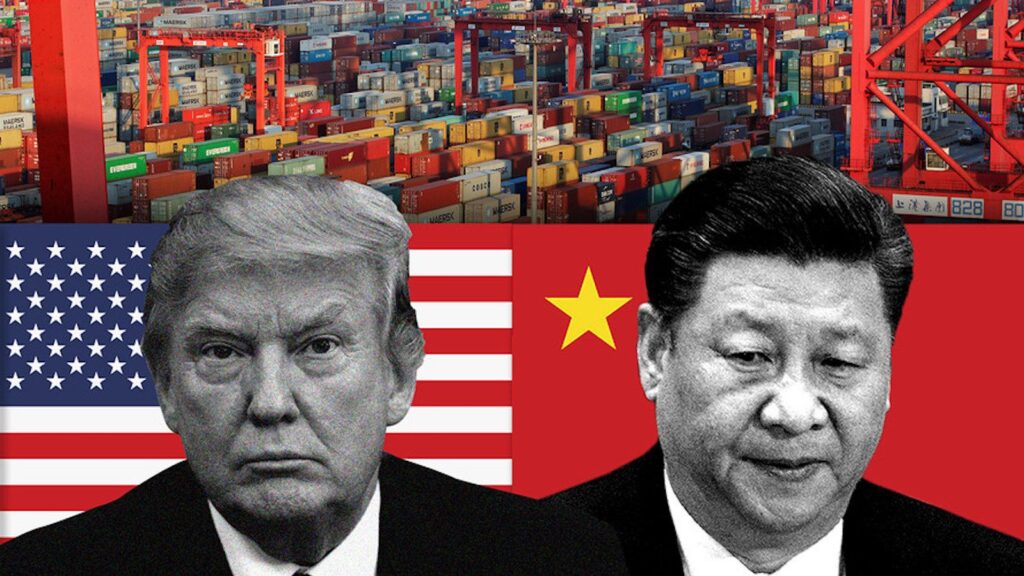
TOKYO – Call it the trade war gang that couldn’t shoot straight. When Donald Trump returned to office in January, he pledged to demonstrate economic dominance over China through sweeping tariffs. Yet, six months later, it is the US economy that is experiencing the brunt of the trade war, rather than Asia’s largest economy.
From a 0.3% first-quarter growth contraction to rising inflation and declining housing demand, the Trump 2.0 trade war is boomeranging back on Americans in unpredictable and painful ways. Bond traders are also in turmoil as Trump’s tariffs, spending plans, and attacks on the Federal Reserve’s autonomy wreak havoc with global yields.
Trump’s Strategy Under Scrutiny
The question looming over markets now is what Trump will do when he realizes that his trade war is ineffective. What happens when it becomes clear that investors are essentially ignoring his tirades? A significant wildcard is whether Trump will go all-in on dispelling the #TACO theory that “Trump always chickens out.”
Trump’s threatened 50% tax on Brazil, a country with which the US enjoys a trade surplus, suggests a shift in Trump’s worldview from economic strategy to personal attacks. Trump is reportedly irked that Brazil is holding former President Jair Bolsonaro accountable for an alleged 2022 coup attempt.
The latest steps Trump is taking toward Japan also suggest emotions have overtaken his trade war strategy. Annoyed that Japanese Prime Minister Shigeru Ishiba isn’t simply acquiescing to a trade deal, Trump has declared that Tokyo will face a 25% tariff on top of his 25% global auto levy.
China’s Resilience Amid Trade Tensions
Yet, the real indignity will come from China, which is in no mood to bow to Trump World. Chinese leader Xi Jinping has yet to offer concrete concessions to signal fealty to Trump. Although Trump has claimed since late June that “we just signed with China the other day,” officials in Beijing maintain that US-China trade deal talks are still in the early stages, at best.
The longer China drags its feet, the harder it becomes for Trump to convince his #MAGA base that there’s a huge pot of gold at the end of the rainbow. Adding insult to injury, China reported a better-than-expected performance in the second quarter despite Trump’s barrage of tariffs.
China’s 5.2% economic growth rate is a reminder that Xi Jinping was readier for the tactics of Trump 2.0 than Washington understood. The strategy to diversify trade flows to non-US markets worked as exports jumped.
As Sheng Laiyun, deputy commissioner of the National Bureau of Statistics, explains, China is beating the odds “under the challenging circumstances of rapidly shifting international dynamics and significantly increased external pressure since the second quarter.”
Economic Challenges and Future Prospects
Yet, perhaps the rationale behind Trump’s trade war is what really needs strengthening. Not that China is out of the proverbial woods. Even though China beat the odds in the first half of 2025, says Nomura economist Lu Ting, a “demand cliff” looms in the second half amid expected softer exports, a shaky property sector, and efforts to reduce industrial overcapacity.
Given the high level of uncertainty going forward, Beijing is likely to tread carefully when deploying fresh stimulus. “We see limited urgency for policymakers to strike the policy ‘put’ soon,” says Citigroup economist Xiangrong Yu.
In a recent note, Citigroup economists write that they expect this month’s meeting of the Communist Party’s Politburo to “further confirm a wait-and-see policy mode, while keeping the door open for incremental small-scale support.”
Robin Xing, economist at Morgan Stanley, points to Beijing clamping down on extreme price competition among companies, what Xi’s team calls “involution,” as a sign officials are working to increase confidence. “The renewed focus on anti-involution is a step in the right direction,” Xing says.
Global Implications and Historical Parallels
Challenges abound, though. “China’s export engine is roaring,” says Stefan Angrick, economist at Moody’s Analytics. “The country is running an annual trade surplus of around US$1 trillion. But its domestic economy is fragile. Household confidence and spending are weak. Youth unemployment is stubbornly high, and the property sector is struggling. Private sector investment is subdued.”
Angrick adds that “with domestic demand in the doldrums, the economy is flirting with deflation; consumer prices have changed little since mid-2022. Beijing has responded with extra fiscal and monetary support, including infrastructure spending and measures to lift consumption. And the People’s Bank of China has cut key interest rates.”
These measures aim to cushion the downturn and support employment, but their effectiveness will be constrained by weak consumer and business demand and limited appetite for borrowing. Uncertain global conditions will keep China’s policy accommodative. If growth falters, more easing will follow.
At the same time, says Zichun Huang, economist at Capital Economics, global headwinds are intensifying in ways that will challenge China’s ability to hit this year’s 5% growth target. “Tariffs are likely to remain high and Chinese manufacturers face growing constraints on their ability to rapidly expand global market share by slashing prices,” she explains.
In a note to clients, Morgan Stanley wrote that while growth has been resilient year-to-date, “we still expect it to soften in the second half of the year, due to the payback of front-loaded exports, ongoing negative deflationary feedback loop, and the impact of tariffs on direct exports to the US and the global trade cycle.”
Third-quarter growth, Morgan Stanley notes, could slow to 4.5% or lower, while the “fourth quarter faces unfavorable base effect, putting the annual growth target at risk.” The bank expects Beijing to introduce a $70 billion to $140 billion supplementary budget late in the third quarter.
Overall, though, the impact of tariffs appears to be more manageable than initially expected, as exports to the US constitute less than 3% of China’s GDP, notes Carlos Casanova, economist at Union Bancaire Privée. Consequently, he adds, this may introduce upside risks to his bank’s revised GDP forecast of 4.5% for 2025.
One reason Trump’s trade war isn’t stopping China is that it’s ripped from the pages of the mid-1980s. The 1985 problem was obvious during the Trump 1.0 era from 2017 to 2021. Along with taxes on Chinese goods, Trump’s signature “reform” was a massive $1.7 trillion tax cut that was more the stuff of the go-go Ronald Reagan years than a strategy to reanimate American competitiveness for the future.
It did little to incentivize corporate chieftains to compete with China the organic way by getting the US economy in better shape domestically. Tariffs didn’t increase US productivity, unleash new waves of entrepreneurship, or build new economic muscle at home. Nor will the onslaught of Trump 2.0 import levies coming Asia’s way.
But Trump’s real gift to President Xi is on the economy, as his policies promise to tie one hand behind America’s back. Say what you want about Xi and his opaque, top-down governing style, he’s preparing China for the world it will encounter in 2025 and beyond by pumping billions of dollars into future generation renewable-energy sources, automation, and high-value-added industries.
Trump, by contrast, is determined to return America to the world that existed 40 years ago, one dominated by an industrial model that globalization long ago replaced. Take Trump’s obsession with a deal to weaken the dollar, just as the biggest industrialized nations did back in 1985 at New York’s Plaza Hotel, which Trump once famously owned.
It was there in what became known as the Plaza Accord that the US bulldozed then-archrival Japan and Europe to weaken the dollar, boost the yen, and give Washington something approaching the zero-sum benefits Trump figures should be his for the taking.
The trouble is, Trump is angling to recreate a global industrial system that no longer exists. Back in 1985, world powers could hold sway over currency markets and alter economic trajectories decisively and specifically.
When it comes to the US and China, gray areas abound in ways that raise the stakes for world markets. Globalization and diversified supply chains make it much harder to alter trade relationships with blunt old-economy tools.
Clearly, China isn’t enjoying Trump’s trade war. But Xi must feel like China is winning more than losing as Trump 2.0 shoots the US economy – and his economic legacy – squarely in the foot.
Follow William Pesek on X at @WilliamPesek





